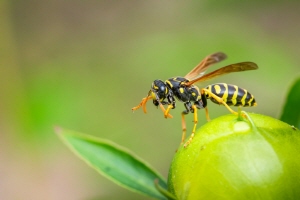Your Flight’s Been Delayed by a Single Wasp

Usually, when a flight is delayed or canceled, you’d expect it to be from a lack of fuel, some nasty weather, or suspicious claims surrounding the aircraft. Sometimes, there might be a bird pecking at it, stopping the entire flight. Or maybe even a larger animal who has stopped in front of the aircraft to take a nap. Surprisingly though, flights for Australians may now be canceled because of wasps.
In the last 39 months, wasps have caused disruption to planes getting ready to take off. Specifically, the pitot probe in an airplane, which is used to measure airspeed. It’s a valuable tool needed to stay safe while flying. Obstructing it causes legitimate problems for pilots trying to stay in the air, and so it is imperative that pilots learn about the wasp and how to combat it.
Wasps tend to nest in cavities or hollow man-made structures. Coincidentally, pitot probes are hollow devices, making them prime spots for wasp nesting. As a result, these pitot probes have been obstructed in the past, leading to wasp-caused crashes. The most notable incident was in 1996 when a plane from the Dominican Republic crashed due to a wasp. To avoid repeating history, researchers have worked hard to uncover how to prevent the wasps from nesting in their pitot probes.
A group of researchers in Australia conducted an experiment in which they attached 3D printed pitot probe replicas to metal that resembled that of a plane’s wing. After attaching everything to a gate, they found that only one exotic species was interested in nesting in the probes; a species called the “Keyhole wasps.” This invasive species originated from Central America but has begun to find its way into the United States and the Pacific Ocean. Identifying which species of wasp was commonly obstructing pitot probes made it easier to strategize against them.
Experts haven’t found a game-changing solution yet, but they do advise to be mindful and cover any hollow opening of the aircraft after landing to prevent wasps from nesting. Just remember to uncover them before taking off. Another tip pilots can follow is to place wasp traps away from the aircraft; it may not work all the time, but it would greatly reduce the number of wasps coming near the pitot probes.
by Nathan Park

















